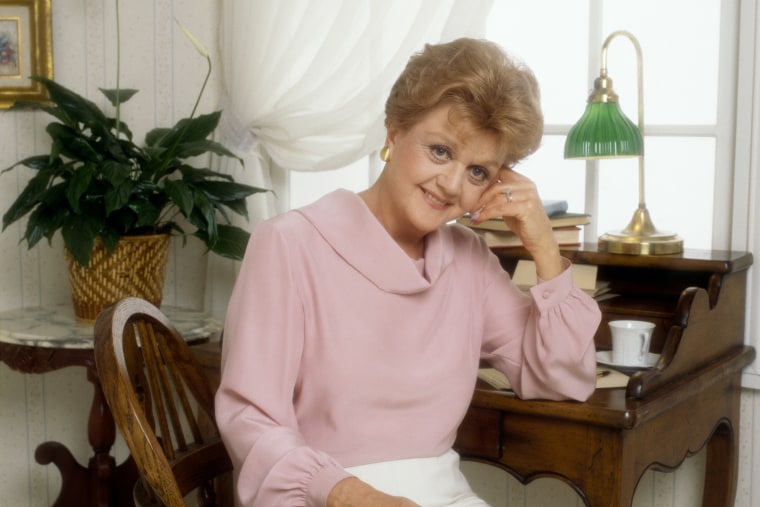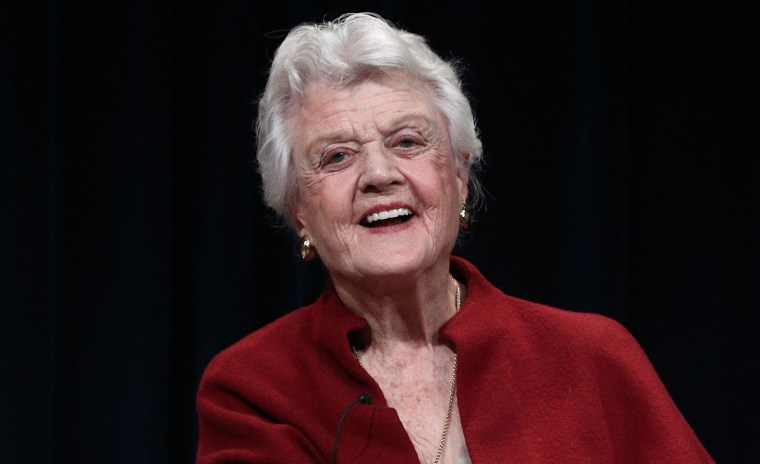The world should mourn the loss of Angela Lansbury, a gifted actress who died this week at 96 after a career of more than seven decades.
By her own description, she played roles that spanned “b----es on wheels and people’s mothers,” including Mrs. Lovett, the maker of human-flesh pies in the Broadway play “Sweeney Todd,” and Laurence Harvey’s evil mother in the film “The Manchurian Candidate.” She then assumed a very different persona for the long-running mystery series that made her famous in the United States, “Murder, She Wrote.” But no tears should be shed for that production.

Granted, Lansbury made the series far better than it would have been otherwise. And we can’t forget that she was part of a “watershed” 1984 season when network TV discovered that “take charge” women could be the stars of prime-time series. The women-led shows that debuted that year included “Jessie,” starring Lindsay Wagner as a police psychiatrist, and “Glitter,” starring Morgan Brittany as a magazine reporter, both of which rapidly slid into obscurity. “Cagney and Lacey” and “Kate & Allie,” introduced a little earlier, had more staying power. “Murder, She Wrote,” however, featured not only a woman, but an older one at that. And it proved to be one of the most successful.
CBS took a leap of faith when the network scheduled “Murder, She Wrote” right after “60 Minutes,” hoping its audience, which skewed old and educated, might stick around to watch. Lansbury’s Jessica Fletcher was energetic, successful, observant and people-loving. As it turned out, she was the kind of older person these viewers craved.
Nobody expected it to be a huge hit, but it was, drawing weekly audiences of 30 million. The secret of its success? In part, it was not aiming too high. “The mysteries were all formula stuff, there’s no question about that,” Lansbury told Washington Post critic Tom Shales in 1996 at the end of its run. ”But the audience felt they could solve it [the mystery] along with me.” Viewers were “very comfortable” with her character, she added.
That comfort came at a cost. The most visible Lansbury vehicle was the epitome of the cheery-even-though-it’s-murder American whodunit, a show whose simplicity for more than a decade failed to challenge either its star or its audience. Ironically, the corrective to this genre came from Lansbury’s original home across the Atlantic in the form of European dramas that explore their crimes with more depth and often more darkness.
Despite Lansbury’s considerable talent, her series did not take risks. Show producer Peter Fischer wanted to make sure Fletcher remained relatable. “She must avoid at all costs being sophisticated or jaded or superior,” he said. Fischer conceded that the series’ strictures could be frustrating for its star. “It’s hard for Angela because she can do 90% more than we ask,” he said.
I believe I first watched “Murder, She Wrote” when I was living with my parents after my newspaper shut down, then again as a married working woman and later as a working mom. I remember well Lansbury’s character, with her constant bike riding and quick mind. But I can’t recall a single plot. The show was just a good palate cleanser after the often-disturbing reporting of “60 Minutes.”
To refresh my memory in honor of Lansbury’s passing, I sampled an episode of “Murder, She Wrote” this week. The plot of “Deadline for Murder,” about the death of an unscrupulous newspaper owner, appealed to me. But viewing it only confirmed my opinion, filled as it was with uninspiring musical cues to signal plot points and canned lines like this gem from the paper’s former publisher: “You’re not fit to sharpen the man’s pencils!”
I must admit that the well-coiffed, well-dressed, kind but assertive Lansbury made the plot entertaining and almost saved the show. But even now that I’m in the appropriate demographic, I wouldn’t watch the series today. I’m sure I’m not alone. Over the years, new technology has splintered audiences. We have far more choice when it comes to entertainment, and millions of us have come to demand better-written mysteries than those 'Murder, She Wrote' exemplified.
Just as Americans no longer settle for Jell-O and marshmallow molds or tuna casseroles but embrace the rich world of ethnic foods, viewers have acquired viewing tastes that encompass the globe. As early as the 1980s, PBS was in the vanguard. Its “Masterpiece Mystery!” series introduced American viewers to British imports, among them Agatha Christie’s “Miss Marple.”
While Jessica Fletcher has been called “America’s Miss Marple,” that’s a disservice to Christie’s far more nuanced character. Miss Marple was quiet, retiring, old-fashioned in dress and made no bones about her status as “elderly.” She used her invisibility to observe far more than anyone else. And beneath that image of fragility was a backbone as hard as flint. She was serious about evil and its potential to invade the quietest English village. As Christie once described her, “There was no unkindness in Miss Marple, she just did not trust people.”
Having watched more European mysteries than I can count, not all are as sublime. But the ones that take their material from literature often teach us something about a country’s culture and sense of justice. The “Detective Montalbano” series, based on the Andrea Camilleri novels, for example, is set in a stunningly beautiful region of Sicily with the starring character always willing to break for lunch with wine in the middle of a murder investigation. Montalbano often tempers justice with a generous helping of compassion.
The French “Lupin” series, a Netflix hit, is inspired by a beloved French character, the elegantly dressed con man Arsène Lupin, created more than 100 years ago by writer Maurice Leblanc. The protagonist of the Lupin series uses the fictional Lupin’s strategies to right wrongs and to repair his Senegalese father’s reputation, which had been unjustly ruined by his white boss. It is short on violence and long on cleverness, showing the power of costume to change our perceptions — a very French notion.
While I’m sorry that Lansbury is no longer with us, I’m glad that the era of “Murder, She Wrote” has passed. To remember the accomplished actress, who won or was nominated for just about every major performance award, I’ll be watching “The Manchurian Candidate.” No one could have played an unscrupulous political zealot better than she did. For that role, I’ll wager, Lansbury gave 100%.
